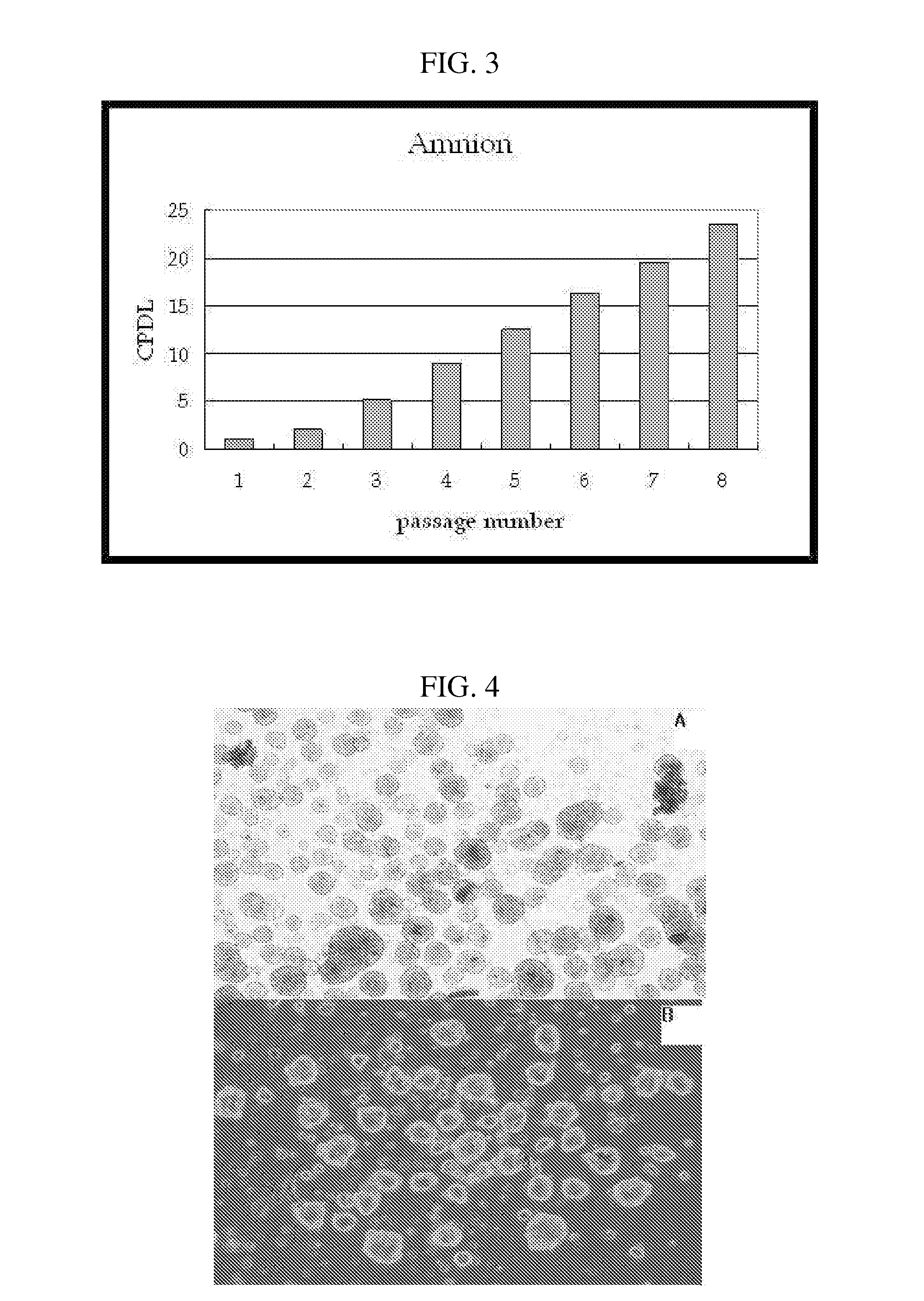Multipotent stem cells derived from placenta tissue and cellular therapeutic agents comprising the same
a multi-potent stem cell, placenta tissue technology, applied in the direction of embryonic cells, artificial cell constructs, biocide, etc., can solve the problems of difficult to maintain isolated stem cells in vitro, difficult to culture in the absence of specifically screened media, and ineffective use of efficient use of these cells, etc., to achieve positive immunological response, negative immunological response, and positive immunological respons
- Summary
- Abstract
- Description
- Claims
- Application Information
AI Technical Summary
Benefits of technology
Problems solved by technology
Method used
Image
Examples
example 1
Preparation and Isolation of Placenta Tissues
[0072] The placentas were collected from normal births and premature births in Guro Hospital, Korea University Medical Center, according to the Institutional Review Board guidebook of Korea University Medical Center, and were used for researches. The placenta tissues were transferred to the laboratory in a state in which it was contained in physiological saline containing an antibiotic.
[0073] The placenta tissues transferred to the laboratory were washed with PBS to remove blood cells and various other tissues, or the tissues were treated with hemolysis buffer to remove blood cells, or each of amnion, chorion, decidua and placental bed tissues constituting the placenta was carefully isolated using forceps.
example 2
Isolation and Culture of Placenta-derived Stem Cells
[0074] Each of the isolated tissues was placed on a 100-mm dish and finely cut with a sterilized scalpel to a size of 1-2 mm. Then, the cut tissue was placed in a collagenase-containing medium, was allowed to react in an incubator at 37° C. for 1-4 hours, after which the tissues treated with collagenase were filtered through 100-mesh wire cloth. The cells thus isolated were placed on a 100-mm dish and cultured in a DMEM medium at 37° C. in a condition of 5% CO2. FIG. 1 is a microscopic photograph showing the morphology of amnion-derived and decidua-derived mesodermal stem cells.
example 3
Examination of Proliferation Rate and Sphere Formation of Placenta Tissue-derived Stem Cells
[0076] The proliferation rate of the stem cells obtained according to the above method of proliferating the human placenta tissue-derived multipotent stem cells was examined. Placenta stem cells resulting from the placenta tissue samples of different human individuals were obtained through the isolation method described in Examples 1 to 3, and then seeded into a 75-flask at a density of 2×105 cells.
[0077] CPDL is an index indicative of the proliferation rate of cells and expressed as the following equation.
CPDL=ln(Nf / Ni) / ln2, wherein Ni: the initial number of seeded cells; and Nf: the final number of cells.
[0078] The CPDL of the amnion-derived stem cells and decidua-derived stem cells was observed according to passage number and, as a result, the cells showed a CPDL value of about 30 at passage 12 (see FIGS. 2 and 3). This CPDL value was similar to that of human fat tissue-derived stem cell...
PUM
| Property | Measurement | Unit |
|---|---|---|
| thickness | aaaaa | aaaaa |
| diameter | aaaaa | aaaaa |
| weight | aaaaa | aaaaa |
Abstract
Description
Claims
Application Information
 Login to View More
Login to View More - R&D
- Intellectual Property
- Life Sciences
- Materials
- Tech Scout
- Unparalleled Data Quality
- Higher Quality Content
- 60% Fewer Hallucinations
Browse by: Latest US Patents, China's latest patents, Technical Efficacy Thesaurus, Application Domain, Technology Topic, Popular Technical Reports.
© 2025 PatSnap. All rights reserved.Legal|Privacy policy|Modern Slavery Act Transparency Statement|Sitemap|About US| Contact US: help@patsnap.com



